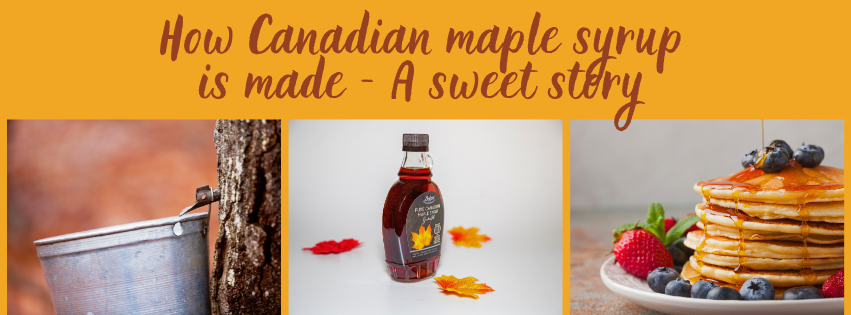Maple syrup is one of Canada’s most prized treasures, dating back centuries and still made in almost unchanged ways. The process of draining the trees, collecting the sap and processing it into a truly unique, natural product. Let’s take a look at how this syrup, popular all over the world, is made.

In the heart of the Beaver Valley, where the air is crisp and the maples are tall, lies the secret to the unparalleled sweetness of Beaver Valley maple syrup. Join us on a journey as we immerse you in the intricate art of tapping – the first step in creating liquid gold. The process of tapping is a dance of phonons between nature’s bounty and the skilled hands of syrup makers. As winter loosens its icy grip, the maple trees wake up, signalling that the time has come to start tapping
1. Choosing the right season
The key time to make maple syrup is in the spring, usually between March and April. This is when the sap starts to flow from the maple trees, when daytime temperatures are already in the plus degrees but remain below freezing at night. This temperature fluctuation creates the flow in the tree that is needed to extract the sap.
2. Choosing the perfect tree
Not all maple trees are the same. Our artisans carefully select sugar maples, known for their high sugar content, to ensure that only the finest sap contributes to the production of Beaver Valley maple syrup. It’s a meticulous process that sets the stage for the exquisite flavour that awaits.
3. The art of tapping
Equipped with experience, Beaver Valley syrup makers skillfully drill small holes in selected trees, gently placing taps to collect sap. It’s a symbiotic relationship, where only what the tree can generously provide is taken, ensuring a healthy and long life.

Such a process is called „draining”. The drained sap is collected in buckets or, in modern systems, piped directly through plastic pipes to larger tanks.
4. Collection and processing of the sap
The sap extracted from maple trees is extremely dilute and low in sugar – about 98% water. To obtain a thick, golden maple syrup from this dilute liquid, the sap must be boiled for a long time. During processing, the water is evaporated while the sugars concentrate, giving the syrup its sweet taste and thick consistency. Usually only 1 litre of maple syrup is produced from 40 litres of raw sap.
5. Filtering and grading the syrup
After boiling, the syrup is filtered to remove the ‘sugar sands’, which are natural minerals. The syrup is then graded according to colour and flavour – from lighter, softer-flavoured maple syrup to darker, more strongly flavoured maple syrup. The grading is based on consumer preference, with some preferring a subtler, milder flavour and others a richer, more characterful flavour.

6. bottling and use
The finished maple syrup is bottled in glass or plastic bottles and ready to enjoy. The uses for the syrup are almost endless: traditionally it is poured over pancakes and waffles, but it can also be used to flavour meats, desserts and even cocktails. Maple syrup has the taste and texture of nature’s perfect sweet gift.

Maple syrup is a centuries-old tradition, harnessing nature’s bounty to create this special sweetness. The process involves draining the trees, collecting the sap, boiling it and carefully processing it to bring it to the table as golden syrup. If you are in Canada, be sure to try this authentic product!


